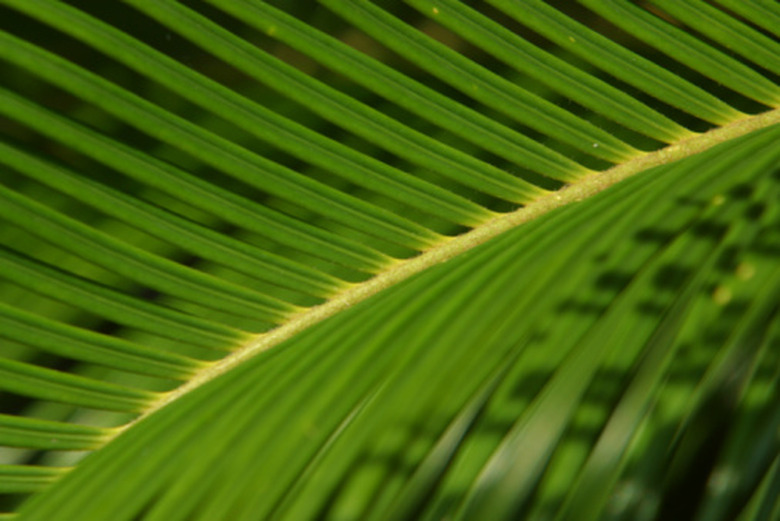Trimming An Indoor Palm Plant
Trimming an indoor palm plant (family Arecaceae) can be important in keeping it healthy. Before you bust out your sewing shears to have at the plant, though, you must understand that leaves are how a plant feeds itself. Without leaves, the process of photosynthesis can't happen, and the plant won't be able to sustain its health. So every healthy leaf you chop off for aesthetics or shaping is one less food source for the plant.
Why Should You Prune?
Why Should You Prune?
Imagine that you have a limited amount of plant fertilizer and water for keeping a garden alive, but the garden you've inherited has multiple dead plants in it. Do you continue watering and fertilizing the dead plants just because they're there, or do you remove them so that the healthy remainder of the garden can get the attention it deserves?
The principle is similar with pruning. Yes, removing too much of the plant can harm its health, but removing what needs to go can make it healthier than ever. The mistake palm owners can make is in thinking that a whole leaf needs to go just because the tips of its fronds have gone brown. Luckily, nature is brilliantly resilient, and such pruning extremes aren't needed at all.
A word to the wise: Never, ever cut off the top of a palm tree, or you won't have a palm tree to worry about anymore.
Snipping Tips for Good Health
Snipping Tips for Good Health
If you get busy in the summer and your plant gets scorched by drying out too much, it may have brown tips. With a sharp pair of pruning shears, you can simply cut off the dead ends of the fronds and leave the healthy green part of the leaves where they are. Do this end-snipping whenever you feel it's required.
Often, you'll have a sick frond here or there that has yellowed or browned in its entirety. These are usually possible to remove by just pinching them off with your fingers. Again, you can do this anytime you see a need for it.
Seasonal Pruning for Palms
Seasonal Pruning for Palms
Don't try to change the overall shape of your palm, as this can produce insufficient foliage to stay healthy. If you have whole leaves becoming unhealthy, they are likely perfect candidates for removal. Always use clean, sharp pruning shears, as dull ones can cause damage, and dirty ones can cause infections.
If you want to reduce the plant's size, removing a couple of leaves can help with that, and doing so in the fall is the right time for it. In fact, pruning in early fall can help the plant weather the winter by concentrating its food source on healthy branches rather than sustaining unhealthy ones too.
For that, snip the branch's stem just before its base meets the stalk but never cut directly on the bark or the stalk of the plant. Sometimes, lower branches on the tree get old and unhealthy and need removing. To do larger pruning jobs like this, plan it for late summer to early autumn and fertilize the plant a week before you intend to prune it so that it springs new growth and new shoots quickly after pruning. Avoid this late-season fertilizing and pruning for outdoor palms, however, because the tender new growth that results from an application of fertilizer can be killed by frost.
Little or No Pruning Required
Little or No Pruning Required
Pruning indoor palms isn't usually a big deal, as they tend to be easier to keep healthy. The best way to keep your plant growing evenly and to avoid pruning at all is to simply rotate the palm once a month to keep the whole plant getting even sunlight all year long. If you do cut off a pup or offshoot for the sake of making the plant prettier, why not plant that pup so you get a whole new palm plant?
